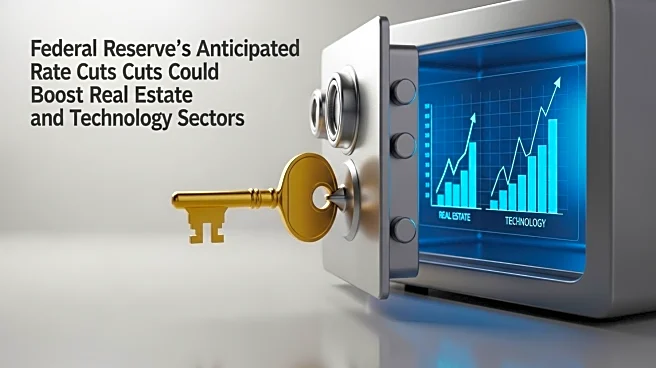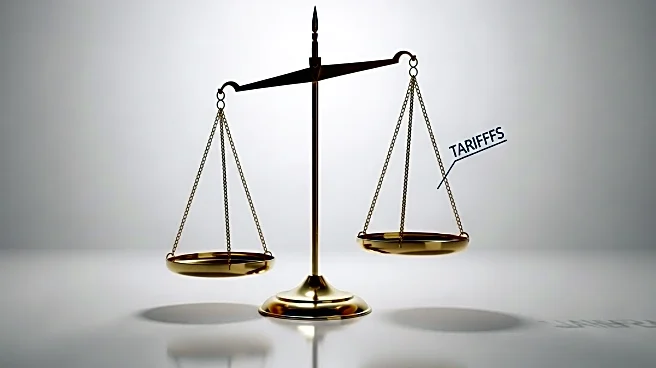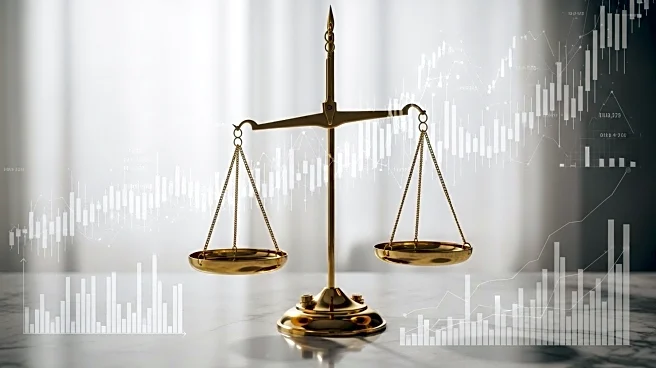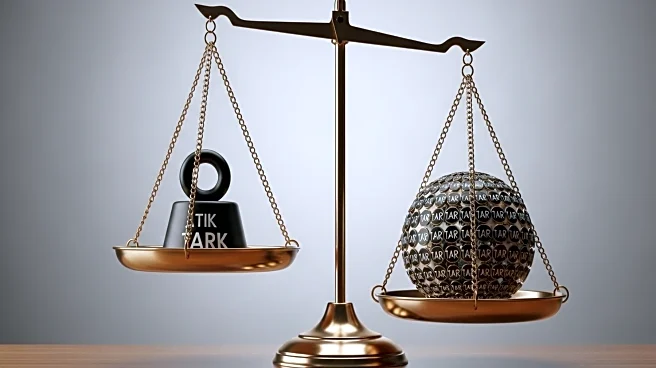What's Happening?
The Federal Reserve is expected to implement a series of rate cuts starting in September 2025, as indicated by the July 2025 FOMC meeting minutes. This policy shift is driven by a need to balance inflation control, with core PCE inflation at 2.7%, and a slowing GDP growth rate of 1% in the first half of 2025. The internal debate within the Federal Reserve is highlighted by differing opinions, such as Governor Christopher Waller's push for an immediate rate cut versus Vice Chair Michelle Bowman's cautious approach. Market predictions suggest a 78% probability of a rate cut in September, with further reductions anticipated by mid-2026. This potential easing of monetary policy is expected to benefit rate-sensitive sectors, including technology, real estate, and utilities.
Why It's Important?
The anticipated rate cuts by the Federal Reserve are significant as they could lower borrowing costs, thereby stimulating demand in sectors like real estate and technology. Lower mortgage rates may encourage housing demand, despite existing challenges such as the 'lock-in effect' where homeowners are reluctant to sell due to low existing mortgage rates. Technology companies, particularly those involved in AI infrastructure, stand to gain from cheaper capital, which can enhance their growth prospects. Additionally, utilities and high-dividend stocks may offer attractive returns in a low-rate environment. Investors are likely to adjust their portfolios to capitalize on these opportunities, potentially leading to shifts in market dynamics.
What's Next?
As the Federal Reserve's September 2025 meeting approaches, investors and market participants will closely monitor economic indicators such as nonfarm payrolls and core PCE inflation to gauge the likelihood and extent of rate cuts. The focus will remain on sectors with structural advantages in a low-rate environment, such as technology and real estate. However, potential risks, including tariff-driven inflation and a steepening yield curve, could influence the timing and magnitude of the Fed's policy adjustments. Investors may need to maintain flexibility in their strategies to adapt to evolving economic conditions.
Beyond the Headlines
The Federal Reserve's policy shift could have broader implications beyond immediate market reactions. A prolonged period of low interest rates may encourage increased borrowing and investment, potentially leading to economic growth. However, it also raises concerns about asset bubbles and financial stability. The decision-making process within the Federal Reserve, marked by internal debates, reflects the complexity of balancing economic growth with inflation control. This dynamic could influence future monetary policy decisions and the Fed's approach to managing economic challenges.











